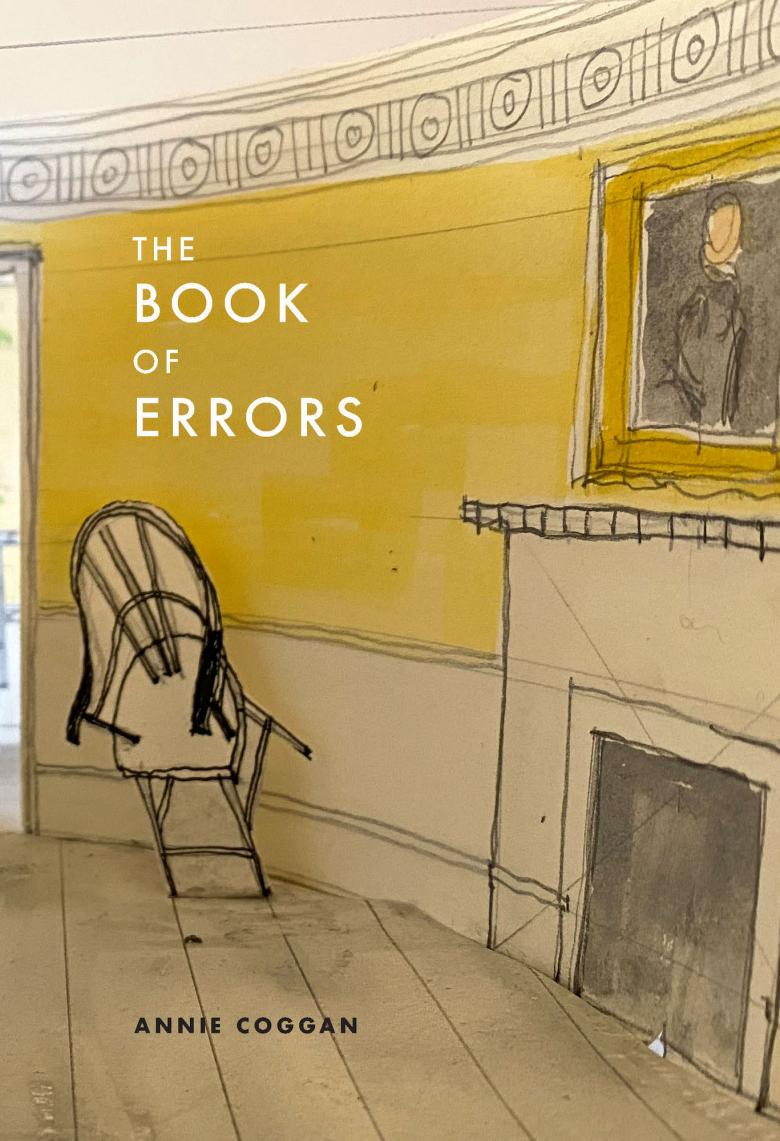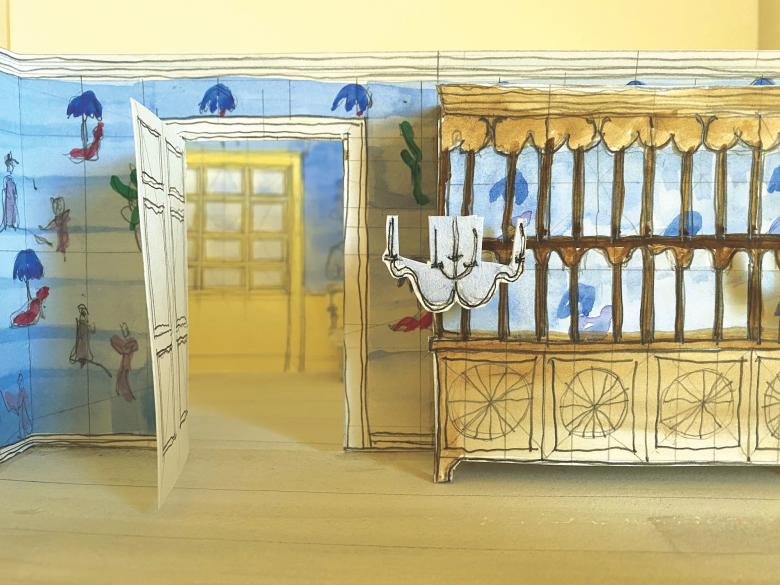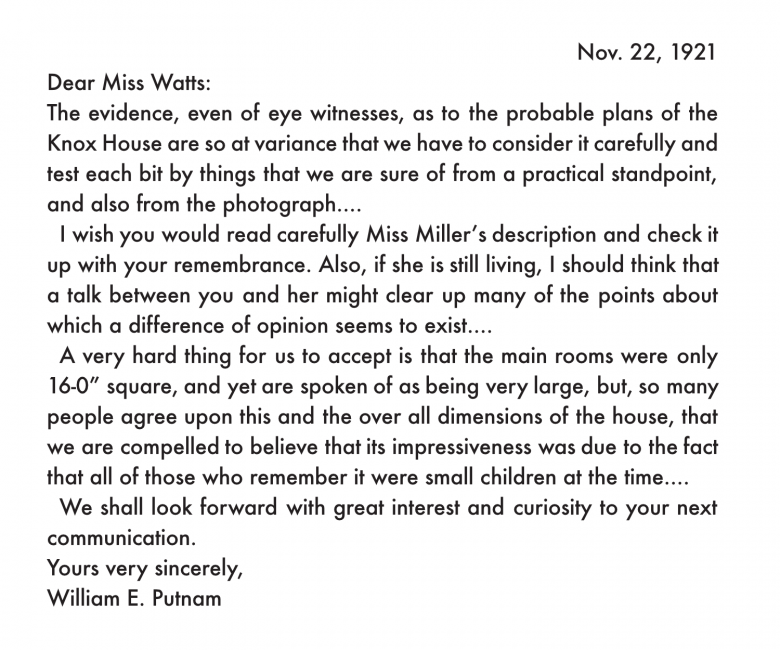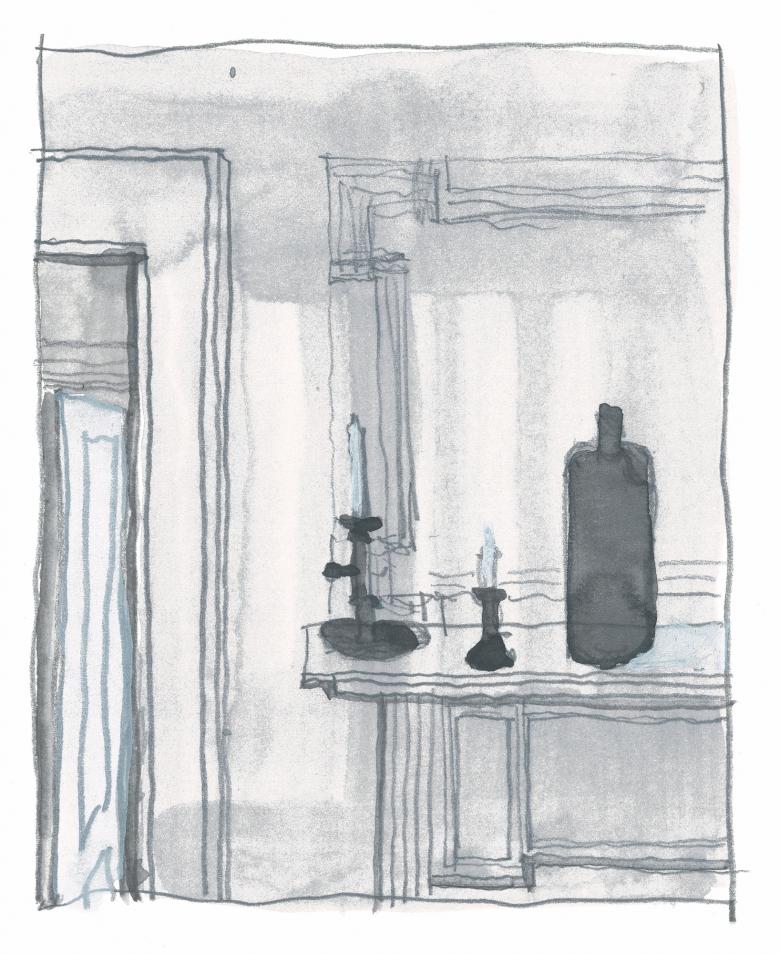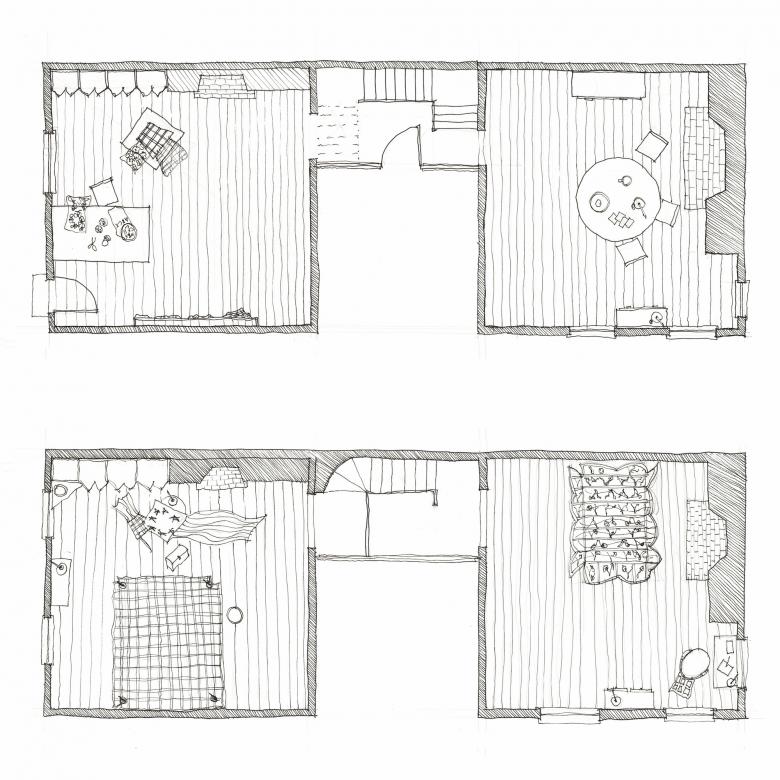A Playful Exploration of Preservation
Madeline Beach Carey
19. October 2021
Cover of The Book of Errors by Annie Coggan. (Image courtesy of A Public Space)
Annie Coggan — designer, artist, educator, and a principal at Coggan + Crawford Architecture and Design in Brooklyn — has created a quirky, gorgeous, singular book called The Book of Errors. This slim volume is a beautiful object, but it is also a manifesto of sorts, a primer on how “to do” historical preservation and of ways to reimagine collective memorials.
Published by A Public Space, this illustrated tale of three architects explores the stories behind three historic American buildings: the Henry Knox Museum in Maine, Fraunces Tavern in Manhattan, and the Betsy Ross House in Philadelphia. The errors of the title refer to missteps, indulgences, and misconceptions by everyone involved in these projects. Through Coggan’s drawings and collages, and words by Mark Hage, the reader discovers that, in the case of the General Henry Knox Museum, the architect seems to have reconstructed a house based on an irrelevant childhood memory. In the case of the Fraunces Tavern, an architect does a lot of research but still ultimately fails. With the Betsy Ross House, another architect seems to impose myth on history as opposed to working towards an actual preservation of the past. Each reconstruction is flawed and Coggan’s drawings ask, ever so delicately, about how and why.
Coggan’s delightful drawings and paper models are presented alongside texts by Hage, some of them “true,” other sections invented. Fact and fiction intertwine in this project — fact and fiction, real and imaginary, dance in this book — daring the reader to see preservation and architectural history as something playful and more inclusive of creativity than one might think.
General Henry Knox Museum. (Image courtesy of A Public Space)
The first part of the triptych, titled “Re-conjecture, Miss Watts and Her Architect. General Henry Knox Museum,” presents letters between the architect, William E. Putnam, and Miss Jane Watts, who wanted to reconstruct the original 1794 house that was demolished in 1871 in order to build the Thomaston Railroad. Here we see Putnam’s predicament:
Image courtesy of A Public Space
Here, Coggan’s painted paper illustrations are paired with a phrase that could sum up the challenges and false hopes of so many preservationists: “I think, we will be near enough to the truth to satisfy everybody.”
Fraunces Tavern. (Image courtesy of A Public Space)
The second section, “Re-imagination. Fraunces Tavern,” presents, in fragments, the process in which architect William Mersereau may or may not have participated in order to restore the tavern that, during the era leading up to the American Revolution, housed a number of radical activities, including meetings of the Sons of Liberty. The Book of Errors gives the reader little to no information about the tavern or about Samuel Fraunces himself. Here, Coggan’s drawings are black and white, more somber and less whimsical than her other illustrations. It seems, from the newspaper clippings the reader is privy to, that Mersereau’s reconstruction of the 18th-century tavern was terribly upsetting for many in the early 20th century:
“On passing the Washington statue... I thought I heard a loud sobbing... I said, ‘Why weepest thou?’ He said, ‘Hast been to Fraunces’s Tavern lately and witnessed the scoundrelly piece of vandalism that they have perpetrated upon that hallowed building, with whose walls I embraced my loved comrades?’”
“How can men or women, who are pledged to preserve evidences of our country’s history, give their consent to such destructive work?”
The architect urges a calmer, more reasoned investigation:
“If those who hold to the opinion that ‘nothing of the old tavern is left after this restoration’ would really investigate matters… not a stick of old timber has been removed that could possibly be left.”
A quote, many years on, from the architecture critic Ada Louise Huxtable closes this section and throws the entire reimagining into question: “If it would only be presented honestly for what it really is.” This dance between architect and his rebel-rousing critics comes to life through Coggan’s drawings, slightly more austere in this section yet still playful, almost winking.
Floor plans of Betsy Ross House. (Image courtesy of A Public Space)
“Re-configuration. Betsy Ross House” is the title for the third and final section of this tale of errors real and imagined. Here the reader is provided with a brief biography of Richard Borgnard Okie, architect, and Betsy Ross, artisan. This section about the reconfiguration of Betsy Ross’s house in Philadelphia is perhaps the most fun. I especially admire the drawing in which the American flag flows from one floor of the house to another. The list of Ross’ favorite pastime, favorite possession, and her nemesis reads like something out of a Lydia Davis story, while the drawings of the spartan house could be the setting for a children’s story about anything from flag-making to cookery, magic to sewing lessons. This is a playhouse in so many ways.
Coggan’s fanciful illustrations remind readers that preservation is always about many possibilities, a variety of visions, as opposed to one monolithic memory shared by one and all. By allowing us to play, in a way that feels almost childish at first, Coggan’s re-imaginings, her exploration into what may or may not have happened, allow readers to engage with an architectural process in a unique, dreamlike way. This experience of reading/looking is engaging in a way that feels foundational, as if rethinking past constructions also allows one to consider future constructions in many more dimensions.
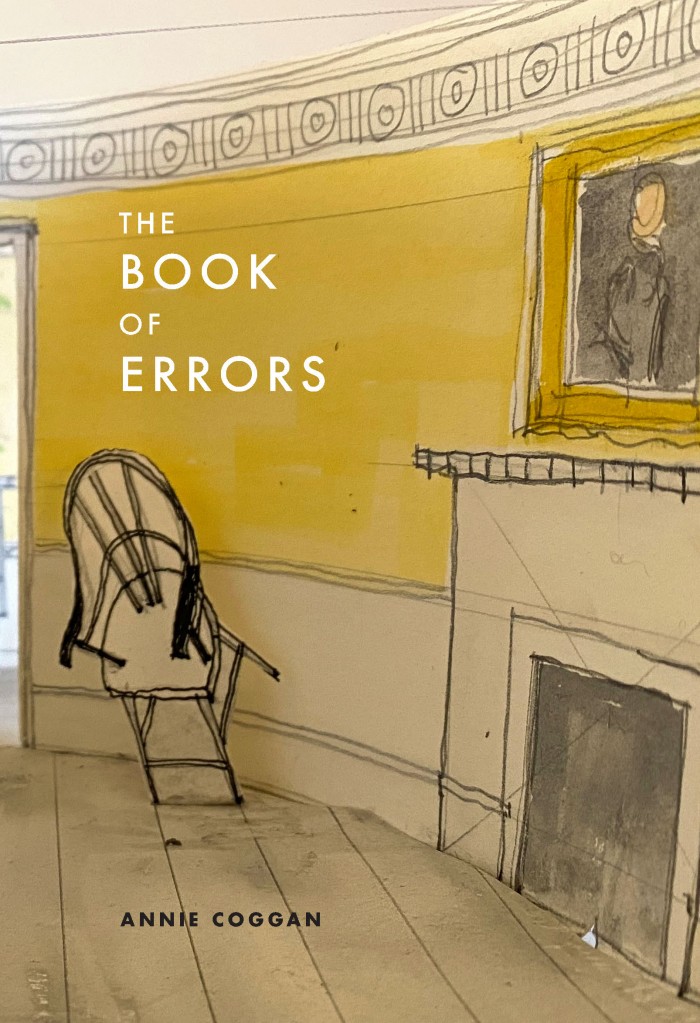
The Book of Errors
Annie Coggan
Text by Mark Hage
64 Pages
Paperback
ISBN 9781734590791
A Public Space
Purchase this book
